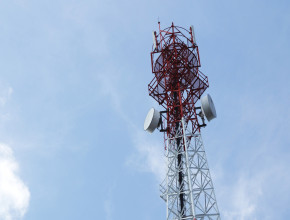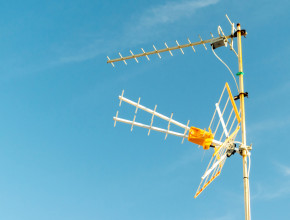
Today, we need wireless antennas to send and receive signals without using wires. We have many types of antennas that help us connect phones, Wi-Fi, TV and GPS systems. A sector antenna is one of those solutions that makes wireless communication fast and mobile. From browsing to watching live sports, you can make everything possible today with the device. This guide will help you understand what a sector antenna is, how it works, and why it is useful. Let’s get started!
Introduction to a Sector Antenna?
A sector antenna is a type of directional antenna that you can use for getting coverage in a specific sector or area. That simply means it sends and receives signals in one direction, which makes it ideal for targeted and focused wireless coverage.
Sector antennas are used in wireless communication systems. It is often seen in cell towers, Wi-Fi networks, CCTV systems, military communications, and long-distance wireless data transmission setups. This device produces a radiation pattern that is wide in the horizontal plane and narrow in the vertical plane. That allows coverage over a larger area while minimizing interference from others.
How does a Sector Antenna Work?
A sector antenna creates a focused beam of coverage in a particular direction. They are designed with multiple individual antenna elements. These elements are arranged in a circular or semicircular shape and are connected to a separate feedline. Their work is to radiate or receive radio waves in a specific direction.
A sector antenna covers a fixed angle, such as 60°, 90°, or 120°. This wireless solution uses a directional beam to send and receive signals within that sector. This gives you the power to share and receive wireless signals efficiently. You will need to mount your sector antenna on a tower or pole that provides strong and targeted coverage to users in that area. This antenna can also be used as an omnidirectional antenna as well. For this, you need to use multiple sector antennas for full 360-degree coverage. This unique structure will help you reduce interference and boost performance in cellular, Wi-Fi, and surveillance networks.
Advantages of Using Sector Antenna
Sector antennas offer several advantages because they provide concentrated coverage. This reduces signal interference and can handle high user traffic well. Knowing its benefits will help you choose the right antenna solution for better performance, stable connections and wider reach in wireless networks like mobile towers, WiFi zones or surveillance systems. Here are the key advantages of using a sector antenna:
Directional Coverage
A significant advantage of sector antennas is their directional radiation pattern. This allows users to focus the signal in one direction, making it better for long-distance communications. It provides long-range data sharing with high efficiency, ensuring reliable and effective wireless performance. When you use this sector UHF antenna for signal sharing, you can avoid interference from unwanted areas. This makes communication clearer and more reliable.
Increased Capacity
Sector antennas can handle more users or data at the same time. This is because of their stronger capacity through features like narrow beamwidth and MIMO (Multiple Input, Multiple Output) technology. They are designed to increase your network performance, reduce delays, and support high-demand areas like cities or stadiums. Using this antenna for your personal or business use will give you faster and more efficient support for everyone. The power to handle more users helps you maintain your productivity by getting access to a constant connection.
Reduced Interference
A sector antenna comes with the capability to share signals in a specific direction. That is the reason it provides access to reduce interference from other nearby antennas. This advantage from a sector antenna improves the signal quality and overall performance of the network. That reduces interference in a sector antenna, which simply means it limits unwanted signals from other directions by focusing its coverage in a specific area.
Scalability
One of the crucial features of a sector antenna is its scalability. It allows you to easily expand network coverage by adding more antennas without major changes. That helps meet growing user demands that ensure better performance and support future upgrades. You can change this antenna as per the requirement of the situation. As we also mentioned above, it is a directional antenna, but multiple sector antennas can be used as an omnidirectional antenna for sharing and receiving signals in all directions.
How to Choose the Right Sector Antenna for Your Needs?
If you want to choose the right sector antenna, consider a few points like coverage area, frequency needs, and usage. This will help you determine the right solution for you. First, you need to decide how wide an area you want to cover. With sector VHF antennas, coverage angles of 60°, 90°, and 120° are possible. A smaller antenna angle means more focused coverage. Larger ones, however, cover a wider area.
Look at the frequency band of your network, such as 2.4 GHz or 5 GHz for Wi-Fi or other ranges for cellular networks. You need to consider its gain. Higher gains refer to offering stronger signals over longer distances. Apart from that, whether you are looking for an outdoor solution or an indoor one, also think about that. If you choose it for outdoor use, your solution must be a weatherproof design. Having these options allows you to choose the solution that best meets your specific needs.
Final Words
Today, sector antennas are frequently used wireless solutions. You can find this antenna used in cellular base stations, Wi-Fi access points, wireless broadband routers, surveillance cameras, point-to-multipoint radios, and satellite communication systems. This equipment plays a very crucial role in these devices because of their unique features. It offers focused coverage, better performance, and efficient signal distribution.
Sector antennas play a vital role in cell towers, Wi-Fi hotspots, military communication systems, CCTV surveillance, wireless internet service providers (WISPs), smart cities, airports, stadiums, and outdoor event venues. There is no doubt that sector antennas are cutting-edge devices in modern communications with unique features that enable us to share and receive data.





